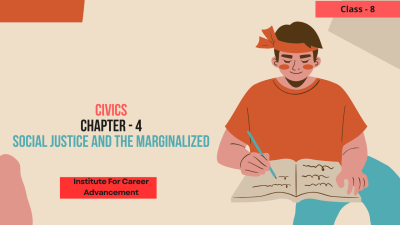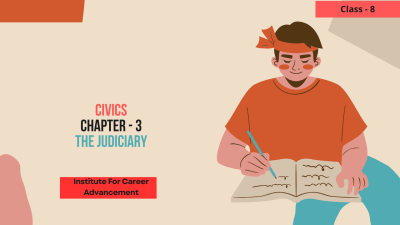Courses


 Compare
Compare
Resources are the materials and assets that are available to a society or community. They can be classified into various categories based on their origin, availability, and renewability. Understanding resources is essential for sustainable development and ensuring the well-being of future generations. Key aspects of resources include: Natural Resources: Exploring the different types of natural resources, such as minerals, forests, water, and energy sources. Human Resources: Understanding the role of human capital, including skills, knowledge, and labor, in economic development. Capital Resources: Examining the importance of capital goods, such as machinery, equipment, and infrastructure, in production and economic growth. Resource Management: Discussing the strategies and policies for managing resources effectively and sustainably. Resource Depletion and Conservation: Addressing the challenges of resource depletion and the importance of conservation and sustainable use. By studying resources, students gain a deeper understanding of the world around them and the importance of responsible resource management for a sustainable future. সম্পদ হল এমন উপকরণ এবং সম্পদ যা একটি সমাজ বা সম্প্রদায়ের জন্য উপলব্ধ। তাদের উৎপত্তি, প্রাপ্যতা এবং পুনর্নবীকরণযোগ্যতার উপর ভিত্তি করে তাদের বিভিন্ন বিভাগে শ্রেণীবদ্ধ করা যেতে পারে। টেকসই উন্নয়ন এবং ভবিষ্যৎ প্রজন্মের কল্যাণ নিশ্চিত করার জন্য সম্পদ বোঝা অপরিহার্য। সম্পদের মূল দিকগুলির মধ্যে রয়েছেঃ প্রাকৃতিক সম্পদঃ খনিজ, বন, জল এবং শক্তির উৎসের মতো বিভিন্ন ধরনের প্রাকৃতিক সম্পদ অন্বেষণ করা। মানব সম্পদঃ অর্থনৈতিক উন্নয়নে দক্ষতা, জ্ঞান এবং শ্রম সহ মানব মূলধনের ভূমিকা বোঝা। মূলধন সম্পদঃ উৎপাদন ও অর্থনৈতিক প্রবৃদ্ধিতে যন্ত্রপাতি, সরঞ্জাম এবং পরিকাঠামোর মতো মূলধন পণ্যের গুরুত্ব পরীক্ষা করা। সম্পদ ব্যবস্থাপনাঃ কার্যকরভাবে এবং টেকসইভাবে সম্পদ পরিচালনার জন্য কৌশল এবং নীতিগুলি নিয়ে আলোচনা করা। সম্পদ হ্রাস ও সংরক্ষণঃ সম্পদ হ্রাসের চ্যালেঞ্জ মোকাবেলা এবং সংরক্ষণ ও টেকসই ব্যবহারের গুরুত্ব। সম্পদ অধ্যয়নের মাধ্যমে, শিক্ষার্থীরা তাদের চারপাশের বিশ্ব এবং একটি টেকসই ভবিষ্যতের জন্য দায়িত্বশীল সম্পদ ব্যবস্থাপনার গুরুত্ব সম্পর্কে গভীর ধারণা অর্জন করে।
₹599
0 Lessons
Hours

 Compare
Compare
This topic explores the role of the government in the economy, examining how it influences economic activities and promotes development. It delves into various aspects of government intervention, including economic planning, public sector enterprises, taxation, and subsidies. Key areas covered in this topic include: Economic Planning: Understanding the role of government in planning and guiding economic development. Public Sector Enterprises: Examining the role of government-owned companies and their significance in the economy. Taxation: Analyzing the different types of taxes and their impact on the economy. Subsidies: Understanding the concept of subsidies and their role in supporting various sectors of the economy. Economic Regulation: Exploring the government's role in regulating economic activities and ensuring fair competition. By studying the Economic Presence of the Government, students gain a deeper understanding of the relationship between the government and the economy. They also develop an appreciation for the complex interplay of economic policies and their impact on society. এই বিষয়টি অর্থনীতিতে সরকারের ভূমিকা অন্বেষণ করে, এটি কীভাবে অর্থনৈতিক ক্রিয়াকলাপকে প্রভাবিত করে এবং উন্নয়নকে উৎসাহিত করে তা পরীক্ষা করে। এটি অর্থনৈতিক পরিকল্পনা, রাষ্ট্রায়ত্ত উদ্যোগ, কর এবং ভর্তুকি সহ সরকারি হস্তক্ষেপের বিভিন্ন দিক নিয়ে আলোচনা করে। এই বিষয়ে অন্তর্ভুক্ত মূল ক্ষেত্রগুলির মধ্যে রয়েছেঃ অর্থনৈতিক পরিকল্পনাঃ অর্থনৈতিক উন্নয়ন পরিকল্পনা ও পরিচালনায় সরকারের ভূমিকা বোঝা। পাবলিক সেক্টর এন্টারপ্রাইজঃ সরকারি মালিকানাধীন সংস্থাগুলির ভূমিকা এবং অর্থনীতিতে তাদের গুরুত্ব পরীক্ষা করা। কর নির্ধারণঃ বিভিন্ন ধরনের কর এবং অর্থনীতিতে তাদের প্রভাব বিশ্লেষণ করা। ভর্তুকিঃ ভর্তুকির ধারণা এবং অর্থনীতির বিভিন্ন ক্ষেত্রকে সহায়তা করার ক্ষেত্রে তাদের ভূমিকা বোঝা। অর্থনৈতিক নিয়ন্ত্রণঃ অর্থনৈতিক কার্যক্রম নিয়ন্ত্রণ এবং ন্যায্য প্রতিযোগিতা নিশ্চিত করার ক্ষেত্রে সরকারের ভূমিকা অন্বেষণ করা। সরকারের অর্থনৈতিক উপস্থিতি অধ্যয়নের মাধ্যমে শিক্ষার্থীরা সরকার ও অর্থনীতির মধ্যে সম্পর্কের গভীরতর বোধগম্যতা অর্জন করে। তারা অর্থনৈতিক নীতির জটিল পারস্পরিক ক্রিয়া এবং সমাজে তাদের প্রভাবের জন্যও প্রশংসা গড়ে তোলে।
₹599
0 Lessons
Hours

 Compare
Compare
This topic explores the concept of social justice and the challenges faced by marginalized groups in society. It examines the root causes of social inequality and discrimination, as well as the efforts to promote social justice and inclusion. Key areas covered in this topic include: Understanding Social Justice: Defining social justice and its importance in a democratic society. Marginalized Groups: Identifying marginalized groups in society, such as the poor, women, people with disabilities, and minority communities. Root Causes of Social Inequality: Analyzing the factors that contribute to social inequality, including poverty, discrimination, and lack of opportunities. Efforts to Promote Social Justice: Examining various strategies and initiatives aimed at promoting social justice and inclusion, such as affirmative action, anti-discrimination laws, and social welfare programs. Challenges and Obstacles: Discussing the challenges and obstacles faced in achieving social justice, including resistance from powerful groups and structural inequalities. By studying Social Justice and the Marginalized, students gain a deeper understanding of the issues faced by marginalized groups and the importance of promoting social justice. They also develop empathy, compassion, and a sense of social responsibility. এই বিষয়টি সামাজিক ন্যায়বিচারের ধারণা এবং সমাজে প্রান্তিক গোষ্ঠীগুলির সম্মুখীন হওয়া চ্যালেঞ্জগুলি অন্বেষণ করে। এটি সামাজিক বৈষম্য ও বৈষম্যের মূল কারণগুলির পাশাপাশি সামাজিক ন্যায়বিচার ও অন্তর্ভুক্তির প্রচারের প্রচেষ্টাগুলি পরীক্ষা করে। এই বিষয়ে অন্তর্ভুক্ত মূল ক্ষেত্রগুলির মধ্যে রয়েছেঃ সামাজিক ন্যায়বিচার বোঝাঃ গণতান্ত্রিক সমাজে সামাজিক ন্যায়বিচার এবং এর গুরুত্ব নির্ধারণ করা। প্রান্তিক গোষ্ঠীঃ সমাজে দরিদ্র, মহিলা, প্রতিবন্ধী ব্যক্তি এবং সংখ্যালঘু সম্প্রদায়ের মতো প্রান্তিক গোষ্ঠীগুলিকে চিহ্নিত করা। সামাজিক বৈষম্যের মূল কারণঃ দারিদ্র্য, বৈষম্য এবং সুযোগের অভাব সহ সামাজিক বৈষম্যের কারণগুলি বিশ্লেষণ করা। সামাজিক ন্যায়বিচারের প্রচারের প্রচেষ্টাঃ সামাজিক ন্যায়বিচার ও অন্তর্ভুক্তির প্রচারের লক্ষ্যে বিভিন্ন কৌশল ও উদ্যোগ পরীক্ষা করা, যেমন ইতিবাচক পদক্ষেপ, বৈষম্যবিরোধী আইন এবং সমাজকল্যাণ কর্মসূচি। চ্যালেঞ্জ এবং বাধাগুলিঃ শক্তিশালী গোষ্ঠীগুলির প্রতিরোধ এবং কাঠামোগত বৈষম্য সহ সামাজিক ন্যায়বিচার অর্জনে চ্যালেঞ্জ এবং বাধাগুলি নিয়ে আলোচনা করা। সামাজিক ন্যায়বিচার এবং প্রান্তিক অধ্যয়নের মাধ্যমে, শিক্ষার্থীরা প্রান্তিক গোষ্ঠীগুলির সম্মুখীন হওয়া সমস্যাগুলি এবং সামাজিক ন্যায়বিচার প্রচারের গুরুত্ব সম্পর্কে গভীর ধারণা অর্জন করে। তারা সহানুভূতি, সহানুভূতি এবং সামাজিক দায়িত্ববোধের বিকাশ ঘটায়।
₹599
0 Lessons
Hours

 Compare
Compare
The judiciary is the branch of government responsible for interpreting and applying the law. It consists of courts and judges who adjudicate on legal disputes and ensure that laws are upheld. In a democratic society, the judiciary plays a vital role in upholding the rule of law, protecting citizens' rights, and maintaining the balance of power between the government and the people. Key aspects of the judiciary include: Court System: Understanding the structure of the court system, including the Supreme Court, High Courts, and subordinate courts. Judicial Review: The power of the judiciary to review the constitutionality of laws and government actions. Independence of the Judiciary: The importance of the judiciary being independent from the executive and legislative branches. Legal Procedures: Familiarizing oneself with the legal procedures involved in court cases, such as evidence, arguments, and judgments. Role of the Judiciary in Society: Understanding the judiciary's role in upholding justice, protecting human rights, and ensuring the rule of law. By studying the judiciary, students gain a deeper understanding of the legal framework that governs their society. They also develop an appreciation for the importance of an independent and impartial judiciary in a democratic nation. বিচার বিভাগ হল সরকারের একটি শাখা যা আইনের ব্যাখ্যা এবং প্রয়োগের জন্য দায়বদ্ধ। এটি আদালত এবং বিচারকদের নিয়ে গঠিত যারা আইনি বিরোধের বিচার করেন এবং আইন বহাল রাখা নিশ্চিত করেন। গণতান্ত্রিক সমাজে আইনের শাসন বজায় রাখতে, নাগরিকদের অধিকার রক্ষা করতে এবং সরকার ও জনগণের মধ্যে ক্ষমতার ভারসাম্য বজায় রাখতে বিচার বিভাগ গুরুত্বপূর্ণ ভূমিকা পালন করে। বিচার বিভাগের প্রধান দিকগুলির মধ্যে রয়েছেঃ আদালত ব্যবস্থাঃ সুপ্রিম কোর্ট, হাইকোর্ট এবং অধস্তন আদালত সহ আদালত ব্যবস্থার কাঠামো বোঝা। বিচার বিভাগীয় পর্যালোচনাঃ আইন ও সরকারি পদক্ষেপের সাংবিধানিকতা পর্যালোচনা করার জন্য বিচার বিভাগের ক্ষমতা। বিচার বিভাগের স্বাধীনতাঃ বিচার বিভাগের কার্যনির্বাহী ও আইন প্রণয়নকারী শাখা থেকে স্বাধীন হওয়ার গুরুত্ব। আইনি পদ্ধতিঃ আদালতের মামলার সাথে জড়িত আইনি প্রক্রিয়া, যেমন প্রমাণ, যুক্তি এবং রায়ের সাথে নিজেকে পরিচিত করা। সমাজে বিচার বিভাগের ভূমিকাঃ ন্যায়বিচার সমুন্নত রাখতে, মানবাধিকার রক্ষা করতে এবং আইনের শাসন নিশ্চিত করতে বিচার বিভাগের ভূমিকা বোঝা। বিচার বিভাগ অধ্যয়নের মাধ্যমে, শিক্ষার্থীরা তাদের সমাজকে পরিচালনা করে এমন আইনি কাঠামো সম্পর্কে গভীর ধারণা অর্জন করে। তারা একটি গণতান্ত্রিক দেশে একটি স্বাধীন ও নিরপেক্ষ বিচার বিভাগের গুরুত্বের প্রতিও উপলব্ধি গড়ে তোলে।
₹599
0 Lessons
Hours

 Compare
Compare
A parliamentary government is a system of governance where the executive branch (the government) is accountable to the legislature (the parliament). In this type of system, the government derives its power and legitimacy from the parliament, which is elected by the people. Key features of a parliamentary government include: Fusion of Powers: The executive and legislative branches are not strictly separated, as members of the government are also members of the parliament. Collective Responsibility: The government is collectively responsible to the parliament, meaning that if the government loses the confidence of the parliament, it must resign. Party System: Parliamentary governments are typically based on a party system, where political parties compete for power and form governments. Prime Minister: The leader of the government, who is usually the head of the majority party in the parliament. India is a parliamentary democracy, with the Prime Minister as the head of government and the Parliament as the supreme legislative body. সংসদীয় সরকার হল এমন একটি শাসন ব্যবস্থা যেখানে কার্যনির্বাহী শাখা (সরকার) আইনসভার কাছে দায়বদ্ধ থাকে। (the parliament). এই ধরনের ব্যবস্থায়, সরকার সংসদ থেকে তার ক্ষমতা এবং বৈধতা অর্জন করে, যা জনগণের দ্বারা নির্বাচিত হয়। সংসদীয় সরকারের প্রধান বৈশিষ্ট্যগুলির মধ্যে রয়েছেঃ ক্ষমতার সংমিশ্রণঃ কার্যনির্বাহী ও আইন প্রণয়নকারী শাখাগুলি কঠোরভাবে পৃথক করা হয় না, কারণ সরকারের সদস্যরাও সংসদের সদস্য। সমষ্টিগত দায়িত্বঃ সরকার সম্মিলিতভাবে সংসদের কাছে দায়বদ্ধ, যার অর্থ সরকার যদি সংসদের আস্থা হারায় তবে তাকে অবশ্যই পদত্যাগ করতে হবে। দলীয় ব্যবস্থাঃ সংসদীয় সরকারগুলি সাধারণত একটি দলীয় ব্যবস্থার উপর ভিত্তি করে, যেখানে রাজনৈতিক দলগুলি ক্ষমতার জন্য প্রতিযোগিতা করে এবং সরকার গঠন করে। প্রধানমন্ত্রীঃ সরকারের নেতা, যিনি সাধারণত সংসদে সংখ্যাগরিষ্ঠ দলের প্রধান। ভারত একটি সংসদীয় গণতন্ত্র, যেখানে সরকারের প্রধান হলেন প্রধানমন্ত্রী এবং সর্বোচ্চ আইন প্রণয়নকারী সংস্থা হল সংসদ।
₹599
0 Lessons
Hours

 Compare
Compare
The Constitution is the fundamental document that governs a nation. It outlines the structure of government, defines the rights and responsibilities of citizens, and establishes the rules by which the country is governed. In the context of India, the Constitution is a crucial document that has shaped the nation's democracy, legal framework, and social order. Key aspects of The Constitution include: Preamble: The introductory statement that outlines the basic principles and goals of the Constitution. Fundamental Rights: The fundamental rights guaranteed to all citizens, including the right to equality, freedom of speech and expression, and the right to life and liberty. Directive Principles of State Policy: Guidelines for the government to follow in formulating policies and laws. Fundamental Duties: Duties that citizens are expected to perform. Government Structure: The structure of the Indian government, including the Union, States, and local self-government. Amendments: The process of making changes to the Constitution. By studying The Constitution, students gain a deeper understanding of the legal framework that governs India. They also develop an appreciation for the democratic values and principles enshrined in the document. সংবিধান হল একটি মৌলিক দলিল যা একটি জাতিকে পরিচালনা করে। এটি সরকারের কাঠামোর রূপরেখা তৈরি করে, নাগরিকদের অধিকার ও দায়িত্বগুলি সংজ্ঞায়িত করে এবং সেই নিয়মগুলি প্রতিষ্ঠা করে যার দ্বারা দেশ পরিচালিত হয়। ভারতের প্রেক্ষাপটে, সংবিধান একটি গুরুত্বপূর্ণ দলিল যা দেশের গণতন্ত্র, আইনি কাঠামো এবং সামাজিক শৃঙ্খলাকে রূপ দিয়েছে। সংবিধানের প্রধান দিকগুলি হলঃ প্রস্তাবনাঃ প্রারম্ভিক বিবৃতি যা সংবিধানের মৌলিক নীতি এবং লক্ষ্যগুলির রূপরেখা দেয়। মৌলিক অধিকারঃ সাম্যের অধিকার, বাক ও মত প্রকাশের স্বাধীনতা এবং জীবন ও স্বাধীনতার অধিকার সহ সকল নাগরিকের মৌলিক অধিকারের নিশ্চয়তা দেওয়া হয়েছে। রাজ্য নীতির নির্দেশমূলক নীতিঃ নীতি ও আইন প্রণয়নে সরকারের অনুসরণ করার জন্য নির্দেশাবলী। মৌলিক কর্তব্যঃ নাগরিকরা যে দায়িত্ব পালন করবে বলে আশা করা হয়। সরকারি কাঠামোঃ ইউনিয়ন, রাজ্য এবং স্থানীয় স্বায়ত্তশাসন সহ ভারত সরকারের কাঠামো। সংশোধনীঃ সংবিধান পরিবর্তনের প্রক্রিয়া। সংবিধান অধ্যয়নের মাধ্যমে, শিক্ষার্থীরা ভারতকে পরিচালনা করে এমন আইনি কাঠামো সম্পর্কে গভীর ধারণা অর্জন করে। তাঁরা নথিতে অন্তর্ভুক্ত গণতান্ত্রিক মূল্যবোধ ও নীতির প্রতিও উপলব্ধি গড়ে তোলেন।
₹599
0 Lessons
Hours

 Compare
Compare
This topic explores the significant developments and challenges faced by India after gaining independence in 1947. It delves into the formation of a new nation, the challenges of nation-building, and the progress made in various areas such as economic development, social reforms, and foreign policy. Key areas covered in this topic include: Nation-Building: Examining the challenges and strategies involved in building a united and diverse nation. Economic Development: Analyzing India's economic policies and progress, including the Green Revolution, industrialization, and globalization. Social Reforms: Discussing the efforts to address social inequalities and discrimination, such as the caste system, gender discrimination, and poverty. Foreign Policy: Exploring India's foreign policy initiatives, including its role in the Non-Aligned Movement and its relations with other countries. Challenges and Opportunities: Examining the challenges faced by India, such as poverty, inequality, and environmental issues, as well as the opportunities for growth and development. By studying India After Independence, students gain a deeper understanding of the complex challenges and achievements of the newly formed nation. They also develop an appreciation for the progress made in various areas and the ongoing efforts to build a just and equitable society. এই বিষয়টি 1947 সালে স্বাধীনতা অর্জনের পর ভারতের উল্লেখযোগ্য উন্নয়ন এবং চ্যালেঞ্জগুলি অন্বেষণ করে। এটি একটি নতুন জাতি গঠন, জাতি গঠনের চ্যালেঞ্জ এবং অর্থনৈতিক উন্নয়ন, সামাজিক সংস্কার এবং বৈদেশিক নীতির মতো বিভিন্ন ক্ষেত্রে অগ্রগতির উপর আলোকপাত করে। এই বিষয়ে অন্তর্ভুক্ত মূল ক্ষেত্রগুলির মধ্যে রয়েছেঃ জাতি গঠনঃ একটি ঐক্যবদ্ধ ও বৈচিত্র্যময় জাতি গঠনে জড়িত চ্যালেঞ্জ ও কৌশলগুলি পরীক্ষা করা। অর্থনৈতিক উন্নয়নঃ সবুজ বিপ্লব, শিল্পায়ন এবং বিশ্বায়ন সহ ভারতের অর্থনৈতিক নীতি এবং অগ্রগতি বিশ্লেষণ করা। সামাজিক সংস্কারঃ সামাজিক বৈষম্য এবং বৈষম্য, যেমন বর্ণ ব্যবস্থা, লিঙ্গ বৈষম্য এবং দারিদ্র্য মোকাবেলার প্রচেষ্টা নিয়ে আলোচনা করা। বৈদেশিক নীতিঃ জোট নিরপেক্ষ আন্দোলনে ভারতের ভূমিকা এবং অন্যান্য দেশের সঙ্গে সম্পর্ক সহ ভারতের বৈদেশিক নীতির উদ্যোগগুলি অন্বেষণ করা। চ্যালেঞ্জ ও সুযোগঃ দারিদ্র্য, অসমতা এবং পরিবেশগত সমস্যাগুলির পাশাপাশি বৃদ্ধি ও উন্নয়নের সুযোগগুলির মতো ভারতের চ্যালেঞ্জগুলি পরীক্ষা করা। স্বাধীনতার পর ভারত অধ্যয়নের মাধ্যমে শিক্ষার্থীরা নবগঠিত দেশের জটিল চ্যালেঞ্জ এবং সাফল্য সম্পর্কে গভীর ধারণা অর্জন করে। তারা বিভিন্ন ক্ষেত্রে অগ্রগতি এবং একটি ন্যায়সঙ্গত ও ন্যায়সঙ্গত সমাজ গঠনের জন্য চলমান প্রচেষ্টার জন্যও প্রশংসা গড়ে তোলে।
₹599
0 Lessons
Hours

 Compare
Compare
The Nationalist Movement in India refers to the struggle for independence from British colonial rule, which culminated in the establishment of the Indian nation in 1947. This movement was characterized by a growing sense of Indian nationalism, a desire for self-governance, and a rejection of colonial domination. Key aspects of the Nationalist Movement include: Rise of Nationalism: The emergence of a sense of Indian nationalism, fueled by factors such as cultural revival, economic grievances, and political discontent. Social and Political Reforms: The role of social and political reformers in shaping the nationalist movement, advocating for social justice, education, and political rights. Nationalist Organizations: The formation and growth of nationalist organizations, such as the Indian National Congress and the Muslim League. Resistance to Colonial Rule: The various forms of resistance against British rule, including boycotts, protests, and armed struggle. Partition and Independence: The division of India into India and Pakistan in 1947 and the subsequent achievement of independence. The Nationalist Movement was a complex and multifaceted process involving a wide range of individuals, organizations, and ideologies. It was influenced by various factors, including social, economic, political, and cultural forces. The movement's success in achieving Indian independence was a culmination of decades of struggle and sacrifice. ভারতে জাতীয়তাবাদী আন্দোলন ব্রিটিশ ঔপনিবেশিক শাসন থেকে স্বাধীনতার সংগ্রামকে বোঝায়, যা 1947 সালে ভারতীয় জাতি প্রতিষ্ঠার মাধ্যমে শেষ হয়। এই আন্দোলনটি ভারতীয় জাতীয়তাবাদের ক্রমবর্ধমান অনুভূতি, স্বায়ত্তশাসনের আকাঙ্ক্ষা এবং ঔপনিবেশিক আধিপত্যের প্রত্যাখ্যানের দ্বারা চিহ্নিত হয়েছিল। জাতীয়তাবাদী আন্দোলনের মূল দিকগুলির মধ্যে রয়েছেঃ জাতীয়তাবাদের উত্থানঃ সাংস্কৃতিক পুনর্জাগরণ, অর্থনৈতিক অভিযোগ এবং রাজনৈতিক অসন্তোষের মতো কারণগুলির দ্বারা চালিত ভারতীয় জাতীয়তাবাদের অনুভূতির উত্থান। সামাজিক ও রাজনৈতিক সংস্কারঃ জাতীয়তাবাদী আন্দোলন গঠনে, সামাজিক ন্যায়বিচার, শিক্ষা এবং রাজনৈতিক অধিকারের পক্ষে ওকালতি করতে সামাজিক ও রাজনৈতিক সংস্কারকদের ভূমিকা। জাতীয়তাবাদী সংগঠনঃ ভারতীয় জাতীয় কংগ্রেস এবং মুসলিম লীগের মতো জাতীয়তাবাদী সংগঠনগুলির গঠন ও বৃদ্ধি। ঔপনিবেশিক শাসনের প্রতিরোধঃ বয়কট, প্রতিবাদ এবং সশস্ত্র সংগ্রাম সহ ব্রিটিশ শাসনের বিরুদ্ধে প্রতিরোধের বিভিন্ন রূপ। দেশভাগ ও স্বাধীনতাঃ 1947 সালে ভারত ও পাকিস্তানে ভারতের বিভাজন এবং পরবর্তী স্বাধীনতার অর্জন। জাতীয়তাবাদী আন্দোলন একটি জটিল ও বহুমুখী প্রক্রিয়া ছিল যার সঙ্গে বিভিন্ন ব্যক্তি, সংগঠন এবং মতাদর্শ জড়িত ছিল। এটি সামাজিক, অর্থনৈতিক, রাজনৈতিক এবং সাংস্কৃতিক শক্তি সহ বিভিন্ন কারণ দ্বারা প্রভাবিত হয়েছিল। ভারতের স্বাধীনতা অর্জনে এই আন্দোলনের সাফল্য ছিল কয়েক দশকের সংগ্রাম ও ত্যাগের চূড়ান্ত পরিণতি।
₹599
0 Lessons
Hours

 Compare
Compare
This topic explores the significant transformations that occurred in the fields of painting, literature, and architecture during various historical periods. It delves into the key artistic movements, influential figures, and cultural factors that shaped these changes. Key areas covered in this course include: Historical Context: Understanding the historical and cultural factors that influenced artistic developments. Artistic Movements: Examining major artistic movements such as Renaissance, Baroque, Romantic, Impressionist, and Modernist. Key Figures and Their Contributions: Studying the works and contributions of influential artists, writers, and architects. Cultural Influences: Analyzing how cultural factors, such as religion, philosophy, and social change, influenced artistic expressions. Artistic Techniques and Styles: Exploring different artistic techniques, styles, and mediums used in painting, literature, and architecture. By studying Changes in the Arts, students gain a deeper appreciation for the rich and diverse history of artistic expression. They also develop critical thinking skills and an understanding of the cultural and historical contexts that shape artistic creations. এই বিষয়টি বিভিন্ন ঐতিহাসিক সময়কালে চিত্রকলা, সাহিত্য এবং স্থাপত্যের ক্ষেত্রে ঘটে যাওয়া উল্লেখযোগ্য রূপান্তরগুলি অন্বেষণ করে। এটি মূল শৈল্পিক আন্দোলন, প্রভাবশালী ব্যক্তিত্ব এবং সাংস্কৃতিক কারণগুলির মধ্যে অনুসন্ধান করে যা এই পরিবর্তনগুলিকে রূপ দিয়েছে। এই কোর্সে অন্তর্ভুক্ত মূল ক্ষেত্রগুলির মধ্যে রয়েছেঃ ঐতিহাসিক প্রেক্ষাপটঃ শৈল্পিক বিকাশকে প্রভাবিত করে এমন ঐতিহাসিক ও সাংস্কৃতিক কারণগুলি বোঝা। শৈল্পিক আন্দোলনঃ রেনেসাঁ, বারোক, রোমান্টিক, ইমপ্রেশনিস্ট এবং মডার্নিস্টের মতো প্রধান শৈল্পিক আন্দোলনগুলি পরীক্ষা করা। মূল পরিসংখ্যান এবং তাদের অবদানঃ প্রভাবশালী শিল্পী, লেখক এবং স্থপতিদের কাজ এবং অবদান অধ্যয়ন করা। সাংস্কৃতিক প্রভাবঃ ধর্ম, দর্শন এবং সামাজিক পরিবর্তনের মতো সাংস্কৃতিক কারণগুলি কীভাবে শৈল্পিক অভিব্যক্তিগুলিকে প্রভাবিত করেছিল তা বিশ্লেষণ করা। শৈল্পিক কৌশল এবং শৈলীঃ চিত্রকলা, সাহিত্য এবং স্থাপত্যের ক্ষেত্রে ব্যবহৃত বিভিন্ন শৈল্পিক কৌশল, শৈলী এবং মাধ্যমগুলি অন্বেষণ করা। শিল্পকলায় পরিবর্তনগুলি অধ্যয়নের মাধ্যমে, শিক্ষার্থীরা শৈল্পিক অভিব্যক্তির সমৃদ্ধ এবং বৈচিত্র্যময় ইতিহাসের প্রতি গভীর উপলব্ধি অর্জন করে। তারা সমালোচনামূলক চিন্তাভাবনার দক্ষতা এবং শৈল্পিক সৃষ্টিকে রূপদানকারী সাংস্কৃতিক ও ঐতিহাসিক প্রেক্ষাপটগুলি বোঝার বিকাশ ঘটায়।
₹599
0 Lessons
Hours